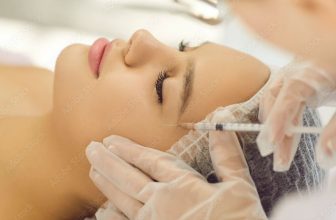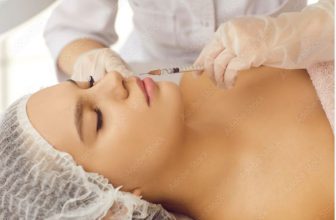
How To Become A Dermatology Nurse?
Learn how to become a dermatology nurse and join the exciting world of skin care. Discover the steps, education requirements, and skills needed to excel in this rewarding career. Get ready to embark on a journey towards becoming a trusted healthcare professional in the field of dermatology.
What is A Dermatology Nurse?

Nurses in the dermatology field have extensive training in diagnosing and treating a wide range of skin conditions. Dermatology nurses treat various skin conditions, from psoriasis to skin cancer to burn wounds to acne. They work in various venues, from hospitals to dermatology clinics to plastic surgeons’ offices.
Nurses with a background in dermatology may choose to focus on cosmetic dermatology, where they can perform laser therapy and chemical peels, among other services.
What are the responsibilities of A Dermatology Nurse?
Nurses specializing in dermatology aid physicians in identifying and treating many skin conditions.
- Methods such as microdermabrasion and skin peels
- Assessing, monitoring, and treating superficial skin injuries (such as burns)
- Patient post-operative care and assistance
- Facilitating skin examinations and
- Helping dermatology help with both routine and emergency surgeries
- Assist with medical treatments requiring the use of specialized equipment, such as cosmetic dermatology
- To disinfect and bandage cuts and burns
- Procuring samples of skin for diagnostic biopsies
- Teaching people how to prevent skin damage and treat common skin diseases and conditions at home.
- Teaching people how to prevent skin damage and treat common skin conditions at home.
- Guiding clients through a skin care regimen
- Teaching patients about proper skin care and how to avoid infections after surgery
- Educating patients and their loved ones about the outcomes of diagnostic tests
- Educating patients on what to expect in the days following surgery
- Keeping close tabs on a patient’s health records and recording any new findings
- Keeping an eye on patients’ medical records
- Conducting a full physical examination of every patient.
- Chemical peeling,
- Preoperative care
- Requirements for Conducting Tests and Reporting Results
- Patients should be screened for skin cancer
- Effective Acne Treatment
- Healing a wide variety of skin injuries, including burns, ulcers, and lacerations
When a patient is discharged from the dermatologist’s office, the nurse’s role shifts to educating the patient and family members or caregivers on how to treat the skin disease at home.
When it comes to skin conditions, they are often able to identify and treat the following:
- Burns
- Skin Cancer
- Warts
- Acne
- Impetigo
- Rosacea
- Psoriasis
- Moles
Therapeutic Procedures in Cosmetic Dermatology

Although not an entirely novel discipline, cosmetic dermatology has quickly become the most rapidly expanding area of medicine over the past ten years. By 2020, experts predict there will have been 15.6 million cosmetic surgeries. In 2020, there were a combined total of 15.5 million aesthetic treatments, which included 2.3 million surgeries and 13.2 million non-invasive treatments.
In 2022, the five most common forms of cosmetic surgery were as follows:
- Facial Plastic Surgery
- Removing Excess Skin From The Eyelids
- Facelift
- Liposuction
- Breast Implant Procedure
In 2022, the following five minimally invasive cosmetic procedures were the most popular among American adults:
- Botox
- Implants for Soft Tissues
- Chemical Peel
- Laser Skin Resurfacing
- Therapy with Intense Pulsed Light (IPL)
Healthy, natural skin is the end game in aesthetic dermatology. Deep cleaning, renewing, regenerating, and restoring skin texture and tone are just some of the many possible benefits of receiving skin.
A few potential sources of these flaws are:
- Acne
- Spots of Ageing
- Birthmarks
- Signs of aging: • Wrinkles and creases
- Melasma
- Moles
- Color changes in the skin (sun spots)
- tags on the skin
- Sagging skin
In addition, the following operations will have the aid of nurses specializing in cosmetic dermatology:
- Hair Removal Using Laser Technology
- The Methods of Getting Rid of Tattoos
- Chemical peels
- Dissolving Scars
- intense pulsed light (IPL) facials
- Procedures that use laser light to remove layers of skin
- Fillers and injectables for the face
- Curing baldness and thinning hair
- Skin-tightening lasers
Due to the high demand and lucrative potential of cosmetic dermatology, many established general dermatology offices are expanding into it. This is why the expansion of this subspecialty of dermatology is outpacing that of more traditional methods by a factor of many. The more services a clinic or doctor’s office can offer its patients, the better the job prospects are for nursing professionals.
What is the work setting for Dermatology Nurses?
Dermatology nurses can be found working in a variety of situations, such as:
- Hospital burn wards
- Private medical centers
- Methods in dermatology
- Aesthetic medical clinics and clinics
How to become a Dermatology Nurse?

There is no substitute for a plan of action when you decide to turn your interest in skincare into a full-time profession. The following is a good place to begin:
1. Get a degree:
To enter the nursing career, one must earn a degree from an approved institution. This degree in nursing might be an associate’s or a bachelor’s. Depending on the institution and the program’s specifics, this education could take anywhere from two to four years.
2. Obtain a Permit:
Once all the necessary requirements are met, individuals need to take the NCLEX (National Council Licensure Examination) exam in order to get their state license. The National Council Licensure Examination for Registered Nurses (NCLEX-RN) is required for registered nurses in the United States and Canada.
3. Gaining Experience:
Once they receive their licensure as a registered nurse, those who wish to specialize in dermatology must strive to gain experience in the area. Experience working on a medical/surgical ward is ideal for nurses seeking employment in doctor’s offices.
4. Become Certified:
Gaining a credential can expand your access to better employment and raise your earning potential.
What Type of Credentials or Certifications Are Required?
There are RN positions in the field of dermatology care that require candidates to have earned the Dermatology Nursing Certification from the Dermatology Nurses’ Association.
Although this certification is not required for many employment, registered nurses specializing in dermatology will have a leg up on the competition.
How does a Dermatology Nurse differ from a Cosmetic Nurse?
Cosmetic nurses’ and dermatology nurses’ work can overlap considerably. Botox and laser treatments are commonly used by both types of nurses, who are all focused on skin wounds despite the various differences.
Some nurses focus exclusively on clinically-based skincare; these professionals are cosmetic or aesthetic nurses. Botox, chemical peels, dermal fillers, micro-needling, and laser treatment are just a few services nurses provide in this rapidly growing field of expertise. In contrast, nurses who specialize in dermatology treat a variety of skin conditions, do cancer screenings, aid in allergy diagnosis, and assist with wound care.
In some jurisdictions, cosmetic nurse practitioners can independently run medical spas. A medical spa offers traditional and cosmetic medical treatments, such as those performed at a dermatology or plastic surgeon’s office. As a rule, dermatology nurses collaborate alongside dermatologists.
What are the job prospects for Dermatology Nurses?
Before making a commitment, you should research the job market and wage range for registered nurses in the dermatology field. With this information in hand, you can make an informed decision. While following your passion is critical, so is making sure that your chosen area of expertise will help you reach your professional and financial goals.
The future of nursing in the field of dermatology is bright. There will always be a need for nurses with this specialty as long as patients are suffering from these conditions. A rise in the number of new occurrences of skin cancer has coincided with the increase in the popularity of elective cosmetic operations.
There is, thus, a current requirement for dermatological nurses. A dermatological nurse’s compensation can range from $40,000 to $60,000 per year, depending on where they work and what kind of clinic they are employed by. Having previous relevant work experience is also important.
You’re making excellent strides toward your dream profession, and we want to ensure you feel and look your best every step. We’re also here to encourage you and give you the tools you need to succeed in your pursuit of a career in medicine.
Conclusion
Becoming a dermatology nurse is a great career choice for those who have experience working in the medical field and are passionate about helping others. It is important to gain experience in the area as well as obtain certification from the Dermatology Nurses’ Association. Additionally, it is important to research job prospects and wage range before making a commitment. With hard work and dedication, one can become a successful dermatology nurse and make an impact on those suffering from skin conditions.







